



The prophecies of Michel de Nostredame, commonly known as Nostradamus, have intrigued scholars and enthusiasts for centuries. While he is often associated with his predictions of global events and political upheavals, some interpretations suggest that he may have foreseen the challenges of climate change. Nostradamus, a 16th-century French astrologer and physician, is celebrated for his cryptic and metaphorical quatrains, which have sparked numerous debates regarding their relevance to contemporary issues, including climate change.
One of the key quatrains cited as evidence of Nostradamus' insight into climate change is Quatrain 75 from Century 5, which states:
"The reign will be very old by lunar years
In the year of the great seventh number done:
Appearing at the time of the great games of slaughter:
Not far from the age of the great millennium
When the dead will come out of their graves."
Proponents of the idea that Nostradamus predicted climate change suggest that this quatrain alludes to an era when the consequences of environmental neglect and climate-related disasters will become undeniable. They interpret the "reign very old by lunar years" as a reference to the long duration of human existence and the environmental damage caused over time. The "great seventh number" could signify a climactic shift or a significant change in the planet's equilibrium due to human actions.
In Quatrain 17 from Century 1, Nostradamus wrote:
"For forty years the rainbow will not be seen.
For forty years it will be seen every day.
The dry earth will grow more parched,
And there will be great floods when it is seen."
Some interpreters argue that this quatrain reflects the irregular and extreme weather patterns associated with climate change. They view the absence of rainbows for forty years as a metaphor for environmental imbalance. The alternating reference to the rainbow symbolizes a fluctuation in climate conditions, with the parched earth and great floods indicative of the consequences of climate change.
It is essential to approach these interpretations with caution and skepticism. Nostradamus' quatrains are purposefully vague and open to multiple interpretations, making it possible to apply them to virtually any topic or issue. Critics contend that retrofitting his prophecies to fit contemporary problems, such as climate change, can be a product of selective reading and confirmation bias.
Furthermore, the historical context of Nostradamus' time did not provide him with direct knowledge of climate science or the long-term impacts of human activity on the environment. Climate change, as we understand it today, is a product of modern scientific research.
While some interpretations of Nostradamus' quatrains suggest that he may have foreseen climate change, it's important to approach these claims with skepticism. Nostradamus' writings are cryptic and open to diverse interpretations, and retrofitting them to contemporary issues can be subjective. The scientific understanding of climate change is based on extensive research, data, and evidence, and attributing such knowledge to a 16th-century astrologer is speculative at best. Nostradamus remains a historical enigma, and his prophecies should be appreciated for their literary value rather than their predictive accuracy regarding climate change.
 Environmental Conservation: A smaller carbon footprint helps protect natural ecosystems, reducing habitat destruction, and preserving biodiversity. This is vital for the health of the planet's diverse flora and fauna.
Environmental Conservation: A smaller carbon footprint helps protect natural ecosystems, reducing habitat destruction, and preserving biodiversity. This is vital for the health of the planet's diverse flora and fauna.
Resource Conservation: Many of the activities that contribute to carbon footprints, such as energy consumption and waste generation, also deplete finite resources. Reducing these activities helps conserve resources like water and fossil fuels.
Key Strategies For Carbon Footprint Reduction:
Energy Efficiency: Improving energy efficiency is a fundamental step in reducing one's carbon footprint. This can be achieved through actions like using energy-efficient appliances, insulating homes, and optimizing heating and cooling systems.
Renewable Energy: Transitioning to clean, renewable energy sources like solar and wind power significantly reduces carbon emissions. Installing solar panels on homes and businesses is an increasingly accessible option.
Sustainable Transportation: Using public transportation, carpooling, biking, walking, or driving fuel-efficient or electric vehicles all contribute to reduced emissions from the transportation sector.
Waste Reduction: Minimizing waste production through recycling and composting reduces the emissions associated with waste disposal in landfills.
Low-Carbon Diet: Adopting a diet that includes more plant-based foods and less meat, particularly beef, can lower the carbon footprint of food consumption.
Conservation: Conserving water and reducing consumption of water-intensive products, like meat and certain crops, contributes to a smaller carbon footprint, as energy is used in the production and transport of water.
Green Consumer Choices: Choosing products with lower carbon footprints and supporting environmentally conscious businesses can help drive demand for sustainable practices.

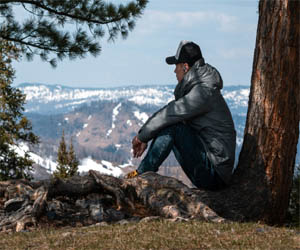
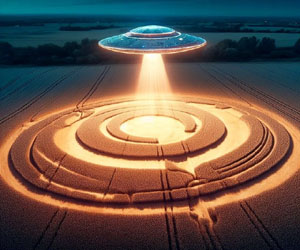

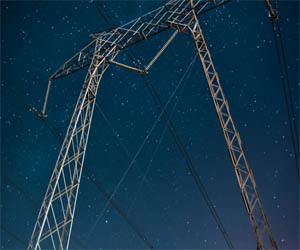

 Recurring Dreams: Some individuals experience recurring dreams where the same themes, scenarios, or even specific characters reappear. These dreams may be a subconscious attempt to grapple with persistent issues, providing an opportunity for self-reflection and problem-solving.
Recurring Dreams: Some individuals experience recurring dreams where the same themes, scenarios, or even specific characters reappear. These dreams may be a subconscious attempt to grapple with persistent issues, providing an opportunity for self-reflection and problem-solving.
Premonitions: Some people claim to have dreamt of events before they occurred, a phenomenon known as precognitive dreaming. While the scientific validity of these claims remains a subject of debate, many believe these dreams to be glimpses of the future.
Sleep Paralysis: Sleep paralysis is a frightening phenomenon in which individuals wake up from a dream, unable to move, and may experience hallucinations or a sense of impending doom. It occurs as one transitions between sleep and wakefulness and is often linked to a disrupted sleep cycle.
Déjà Vu: Déjà vu is the feeling that a current experience has been previously encountered in a dream. This intriguing phenomenon has been the subject of much speculation and has sparked questions about the relationship between dreams and reality.
False Memories: Dreams have the power to create false memories. People may vividly recall events from their dreams as if they were real, blurring the lines between dream and waking life.
Out-Of-Body Experiences (OBEs): Some individuals report having dreams where they view their own bodies from an external perspective. These experiences can be both profound and disorienting, challenging our understanding of consciousness and self.
Epic Dreams: Epic dreams are those that seem to unfold over extended periods, sometimes covering the span of a lifetime within a single dream. These dreams can be rich with symbolism and often leave a lasting impact on the dreamer's waking life.
Telepathic Dreams: Some people claim to have dreamt of events or communicated with others telepathically during their dreams.
Paving The Path To A Sustainable Future
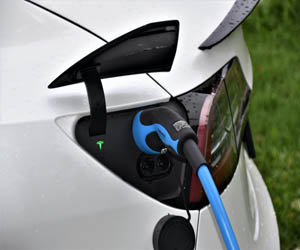 3. Carbon Pricing And Taxes
3. Carbon Pricing And Taxes
Carbon pricing mechanisms, such as carbon taxes and cap-and-trade systems, place a price on carbon emissions. By making carbon-intensive activities more expensive, these policies encourage individuals and businesses to reduce their carbon footprint. This, in turn, motivates a shift away from fossil fuel consumption.
4. Electrification Of Transportation
The electrification of transportation is another key strategy for reducing fossil fuel usage. Electric vehicles (EVs) are becoming increasingly popular as their technology improves and charging infrastructure expands. Shifting from gasoline and diesel-powered vehicles to EVs helps decrease the demand for fossil fuels in the transportation sector.
5. Investments In Public Transportation
Investments in public transportation systems can also contribute to fossil fuel reduction. Well-developed public transit networks make it easier for people to rely less on personal vehicles, thus decreasing the demand for gasoline and diesel fuels.
6. Sustainable Land Use And Urban Planning
Sustainable land use and urban planning focus on designing cities and communities that reduce the need for long commutes and encourage walking, biking, or the use of public transportation. This approach lowers fossil fuel consumption associated with daily commuting.
7. Research And Development
Investing in research and development is critical for the creation of cleaner and more efficient technologies. This includes innovations in energy storage, carbon capture and storage, and new methods of renewable energy production.
A Timeless Connection Of Love And Loyalty
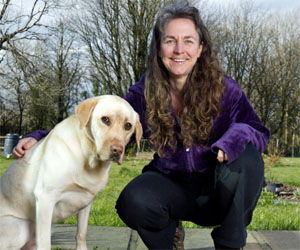 A History Of Companionship: The history of the human-dog bond is a rich tapestry of cooperation and companionship. Dogs were among the first animals to be domesticated by humans, dating back thousands of years. Initially, dogs were utilized for hunting and protection, but over time, their roles expanded to include herding, guarding, and eventually becoming cherished family pets. This evolution of the dog's role in human society laid the foundation for the extraordinary bond we share today.
A History Of Companionship: The history of the human-dog bond is a rich tapestry of cooperation and companionship. Dogs were among the first animals to be domesticated by humans, dating back thousands of years. Initially, dogs were utilized for hunting and protection, but over time, their roles expanded to include herding, guarding, and eventually becoming cherished family pets. This evolution of the dog's role in human society laid the foundation for the extraordinary bond we share today.
Factors That Strengthen The Bond:
Trust And Loyalty: Dogs are renowned for their unwavering loyalty. This trust and devotion between dogs and their owners build a strong foundation for the human-dog bond. The reliability of a dog's presence and affection creates a deep sense of security for their human counterparts.
Communication: Dogs are incredibly adept at understanding human body language, vocal cues, and emotions.
Unraveling The Conspiracy
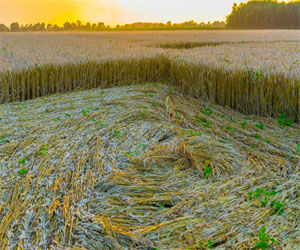 The Government Cover-Up Theory
The Government Cover-Up Theory
The theory of government involvement in crop circles centers around the idea that some circles are not the work of hoaxes or natural forces but rather secretive experiments conducted by government agencies. Proponents of this theory claim that governments are using crop circles to test advanced technologies, including anti-gravity systems and energy sources.
Evidence And Anecdotes
Conspiracy theorists point to several pieces of evidence to support their claims. They cite instances where military personnel were allegedly seen near crop circle formations shortly after they appeared. Some claim that unusual equipment was used to create the circles, equipment that goes beyond what ordinary hoaxers would possess.
Government Response
The official stance of governments around the world is that crop circles are primarily the result of human-made hoaxes. They argue that there is no substantial evidence to support the conspiracy theory. However, this official position fuels suspicions for some who believe the government is actively covering up its involvement in creating or studying crop circles.
Possible Explanations
Skeptics of the government cover-up theory point out that there is a wealth of scientific evidence supporting the natural or human-made origin of crop circles. They argue that intricate crop circle designs can be achieved with simple tools and knowledge of geometry. Additionally, many crop circle enthusiasts and researchers focus on the artistic and geometric aspects of the phenomena rather than attributing them to government experiments.